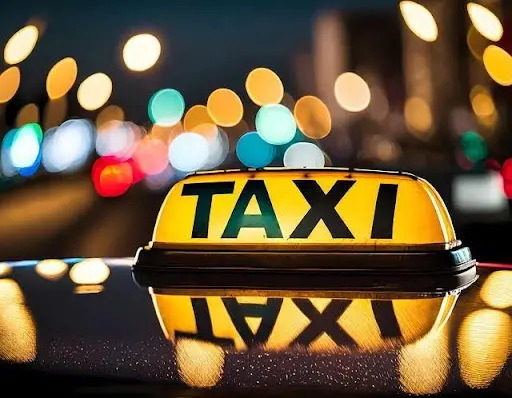MD: Planning to build a taxi app for Dubai? Think about mixing different revenue models. That way, you can keep drivers happy, attract more riders, and maximize your profits.
Dubai is famous for skyscrapers, luxury cars, and cutting-edge tech. It is also one of the busiest transportation hubs in the world. With millions of residents, tourists, and business travelers moving around daily, taxis are a lifeline. It is no wonder that the ride-hailing industry has exploded.
If you are thinking about launching a taxi or ride-hailing app in Dubai, you will have many concerns and doubts. However, one of the first questions you all face is How will this app make money? That is where revenue models come in. Different apps use different approaches. Each has its pros and cons depending on the market. Let’s check that together.

Commission-Based Revenue Model
The most common way taxi apps make money is by taking a commission from each ride. In simple terms, the driver keeps a portion of the fare. The app takes the rest. That is an easy approach for a customer as well. One if ready to book a taxi Dubai from GetTransfer with no questions or concerns.
Why it works in Dubai
- Steady flow of rides — With a high volume of daily trips in Dubai, commission-based models ensure consistent revenue.
- Scalable — The more drivers and riders you have, the more you earn. No complex systems are required.
- Familiar to drivers — Most taxi and ride-hailing operators already expect this setup.
Challenges
- Driver dissatisfaction — High commissions can push drivers to switch to competitors.
- Heavy competition — With multiple apps operating in Dubai, drivers often prefer the platform with lower cuts.
Subscription-Based Revenue Model
Instead of taking a cut from each ride, some taxi apps charge drivers a fixed subscription fee to use the platform. In this case, drivers keep 100% of their fares after paying the subscription. Some smaller ride-hailing services in Asia and Africa are experimenting with flat subscription fees to attract drivers. While this model is not dominant in Dubai yet, it is gaining interest.
Why it works in Dubai
- Driver-friendly — Drivers get to keep all their earnings. This can be attractive in a city with high living costs.
- Predictable income for the app — The company knows exactly how much it will earn from each subscribed driver.
- Great for loyal driver bases — Encourages long-term partnerships between app and drivers.
Challenges
- Risk for the app — If drivers do not get enough rides, they may cancel their subscriptions.
- High marketing costs — To make this model profitable, you need lots of active drivers paying regularly.
Surge Pricing Model
If you have ever booked a taxi during peak hours, you have probably felt the sting of surge pricing. This model increases fares when demand is high. Think weekends in Downtown Dubai, New Year’s Eve near Burj Khalifa, or rush hour near Dubai International Airport.
Why it works in Dubai
- Tourist-heavy market — Visitors are often willing to pay extra for convenience.
- Driver motivation — Higher fares attract more drivers to the road during busy times.
- Boosts profits instantly — A great way for apps to maximize earnings without extra effort.
Challenges
- Customer frustration — Frequent surge pricing can lead to negative reviews.
- Regulatory concerns — Dubai’s RTA monitors pricing closely. So, apps need to comply with local rules.
Which Model Works Best in Dubai?
So, which revenue model is king in Dubai? Well, a hybrid approach often works best.
- Commission-based is reliable and widely accepted. This makes it the backbone of most ride-hailing apps in Dubai.
- The subscription-based model can enable it to attract and maintain drivers who desire to have greater control over their earnings.
- Surge pricing is more profitable in peak times, such as in a city that is highly tourist attractive and has major events.
Most successful applications in Dubai integrate these models. As an example, they can rely on commission-based revenues as their foundation, optional subscription plans to keep their loyal drivers, and overlay surge pricing in the case when demand is high. This triple bottom line strategy strikes a balance between profitability, satisfaction of drivers, and convenience to the riders.
Let’s Wrap It Up
The market in Dubai is a special place where luxury and the hustle go hand in hand. Hence, taxi suites should have flexible revenue systems to succeed. Commission-based models are considered to be the most reliable. Nevertheless, apps can have an advantage through subscription-based and surge pricing strategies. In case you are going to develop a taxi application in Dubai, consider a combination of these models rather than using only one of them. In this manner, you will be able to retain the satisfaction of drivers, generate more riders, and maximize your profits.

















